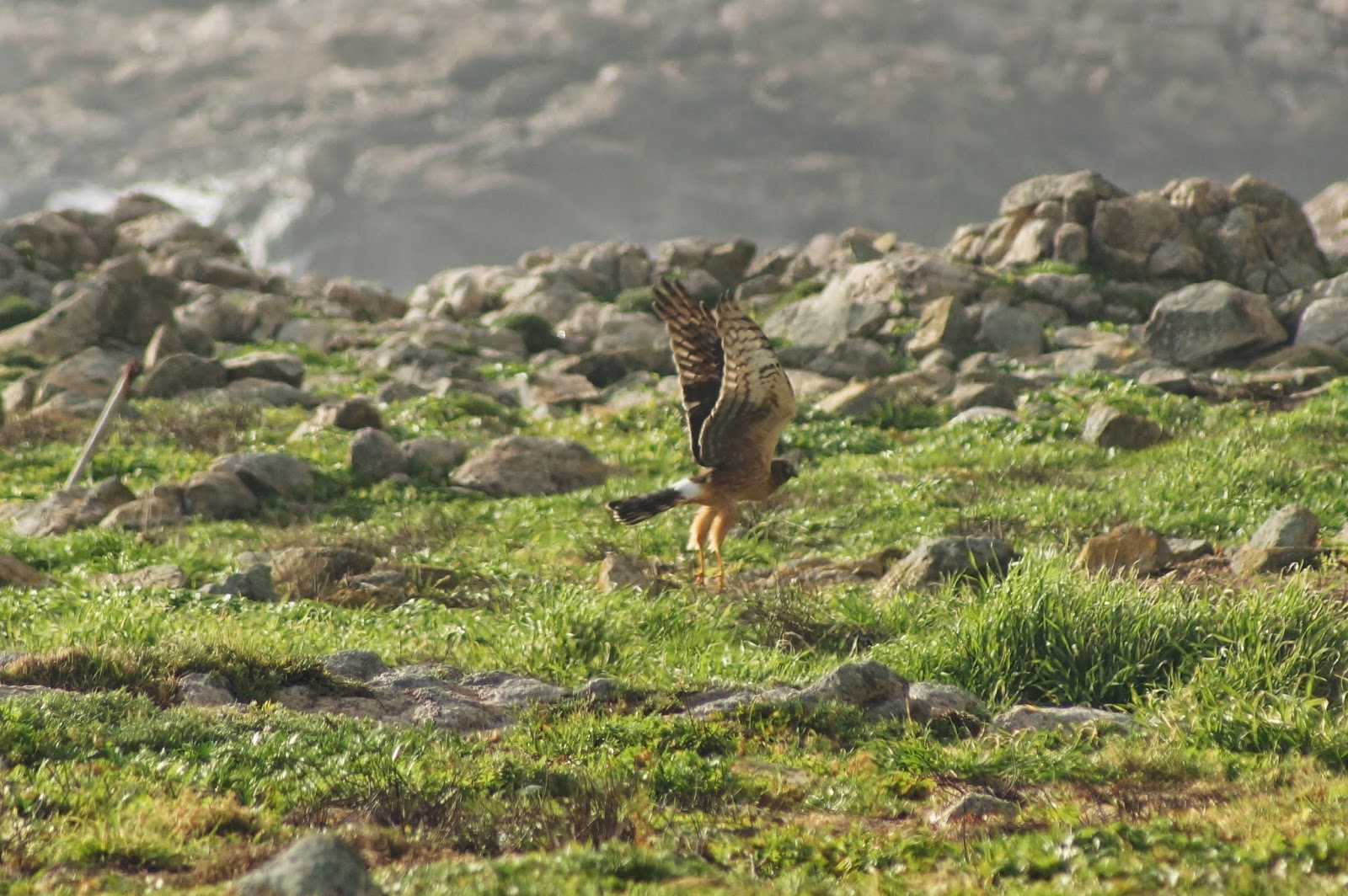Today marks our fourth week on the island (and cookies were made to celebrate). Throughout this time we have said goodbye to RJ, and today Meumeu left on his break, and Sean left, having finished sorting through californian sea lion faecal matter for a diet study. Conditions were perfect for the landing thankfully, as the logistics of launching and taking a boat out of the water with a crane with only 3 people in rough weather would not be easy.
As mentioned in the last post, we made a trip to west end, a rugged and untouched area of the island. When Ryan very casually first mentioned having to zip-line across to another part of the island for a pinniped census, we all thought he was joking, until we saw the harnesses in the drinks cupboard. Conditions were perfect for the trip, sun shining with small swells. Just as well, as the zipline goes mere metres above the water in a channel between the sections of the island.
 |
|
Getting onto west end was the easy part, as it was slightly down-hill, and at low-tide. Trekking across this section of the island made "our" side seem tiny, and incredibly easy to navigate. We climbed 90% incline slopes and cliffs of granite where hand-holds came off in your hand, continually crouching to avoid scaring pinnipeds into the water. There are several thousand californian sea lions present on this side of the island as it is undisturbed by humans, and another elephant seal colony which is home to another group of females, a huge male, and unfortunately a dead pup.
Luckily the visibility was incredible, and we saw over 30 whales throughout the day.
 |
| The blow of a grey whale, showing a perfectly distinguishable heart shape which is very unusual to see around the windy farallones! |
Despite the numbers of other pinnipeds, there were only ~30 fur seals present on the island during our visit, which is a low number compared to previous years at the same time.


We will go back a few more times during my stay to check on numbers of pinnipeds, and this will also give me a bit more practice zip-lining, which I apparently need. Returning on the zip-line was a lot more difficult than coming, as it was up-hill enough to need a hard push off the rocks, whilst timing your jump so that you didn't get hit by a breaking wave. This took me four attempts, coming close enough to the opposite wall to touch it, but not quite enough to grasp the slippery surface and get a foot-hold. Apart from a few cuts and bruises, swinging back and forth whilst somehow avoiding incoming swells was rather fun! I'm definitely looking forward to our next trip over, however until then we have plenty of work to do, with only three of us collecting the same amount of data that 5 were collecting up until yesterday.
The work load is increasing too, with 2 pups, 15 cows, and 7 main males to keep an eye on, alongside younger individuals, new arrivals, other pinniped species, increasing numbers of cetaceans, and sea, shore and song birds. We have had a few interesting arrivals from song birds too, with an uncommon Cassin's finch alongside more commonly seen American Robins and lesser green finches.
 |
| A chunky American Robin |
 |
| Townsends warbler in flight |
 |
| A burrowing owl |
 |
| Lesser gold finch with cassin's finch |
However, not all of the birds are thriving. Probably due to a lack of food availability, we have been noticing a die-off of cassin's auklets, regularly finding dead birds. We clip their wings (to avoid double counting, not to stop them from flying...) and document them, and sometimes it is harder to ID them than others.
 |
| An old, crispy cassins auklet which has been sat on by an elephant seal |
Due to the increasing numbers of cows, and subsequently viable mates, the larger male elephant seals are becoming protective of the colony, throwing out younger males and becoming quick to bite youngsters that get too close to the females.
 |
| A cute immature, a welcome sight after sneaking among the larger guys |
We haven't witnessed any big fights thus far, although have seen plenty of puncture wounds on animals and small pools of blood. Until the truly impressive fighting starts, it is quite nice to watch the younger males play-fight.
Despite how busy some days are, we always make time to gather to watch the sunset when it is clear enough, and watch the pelicans and murres flying by.



























